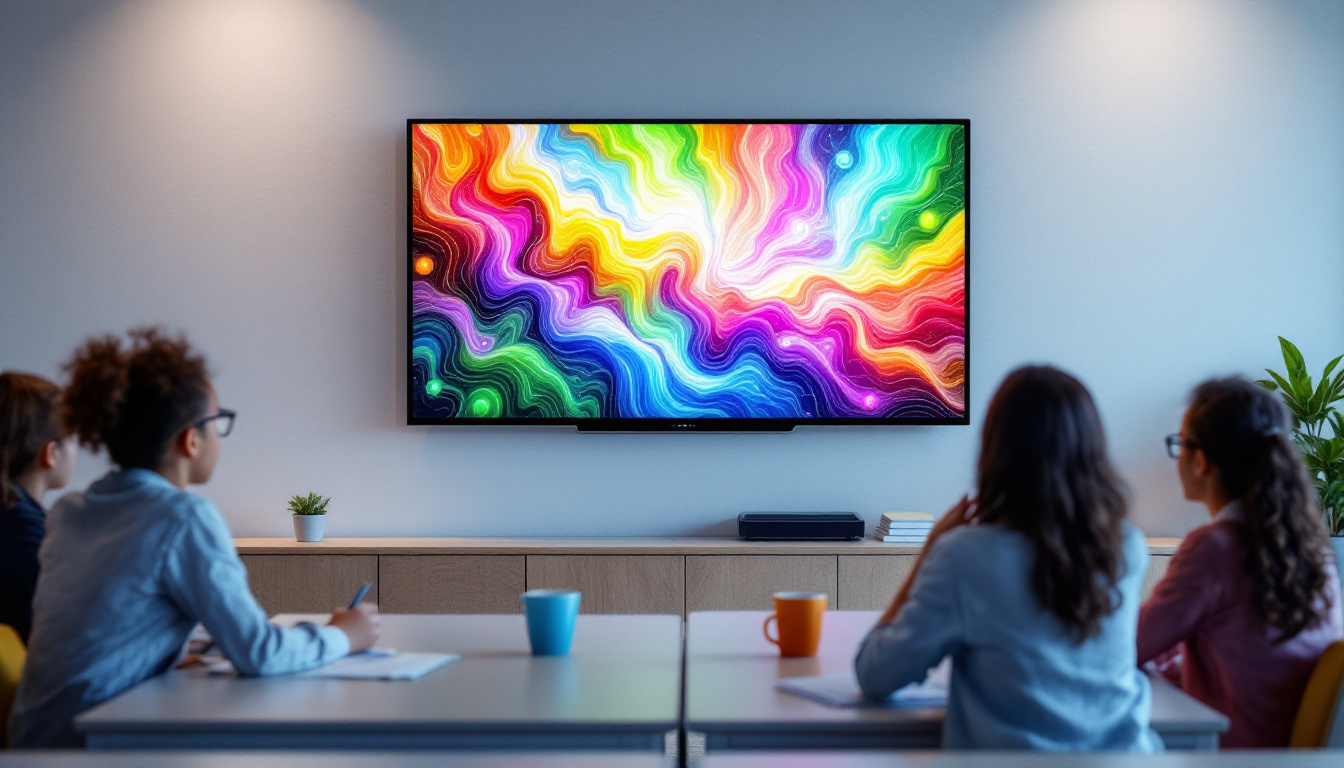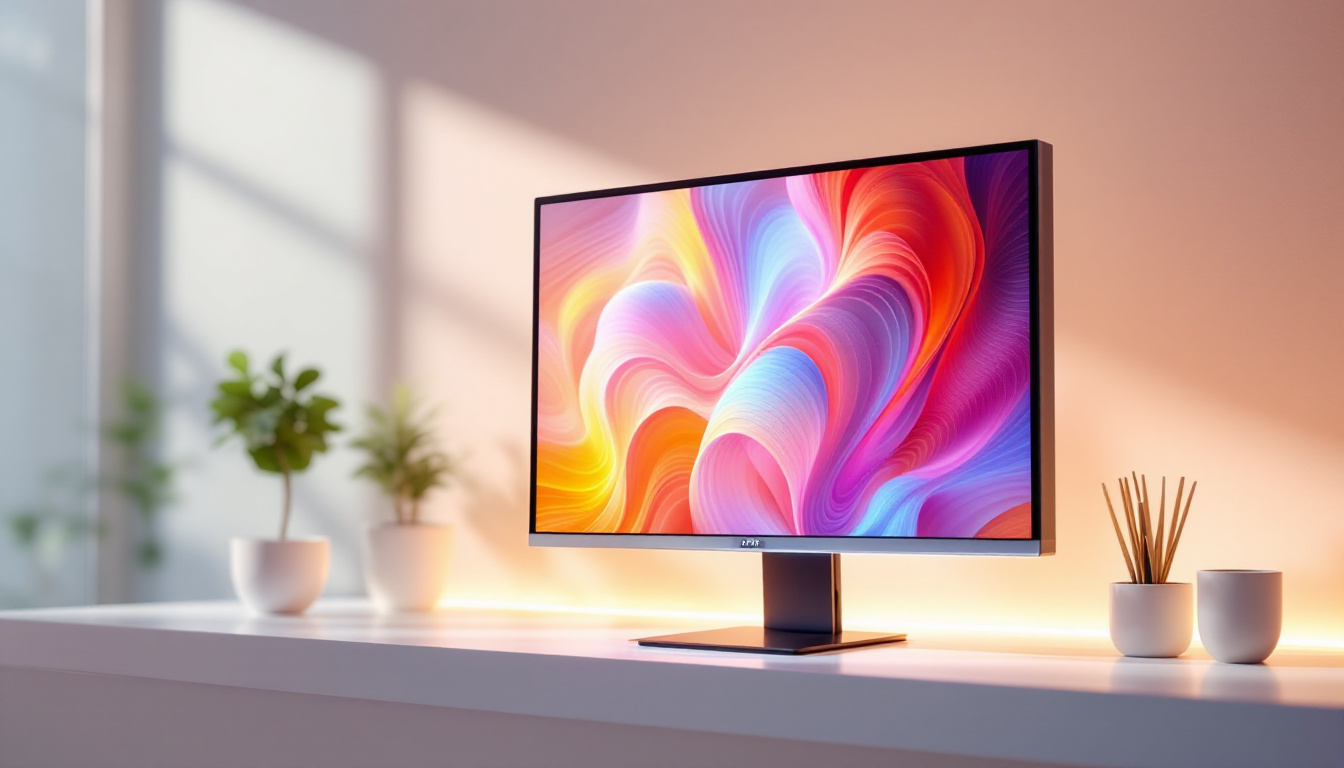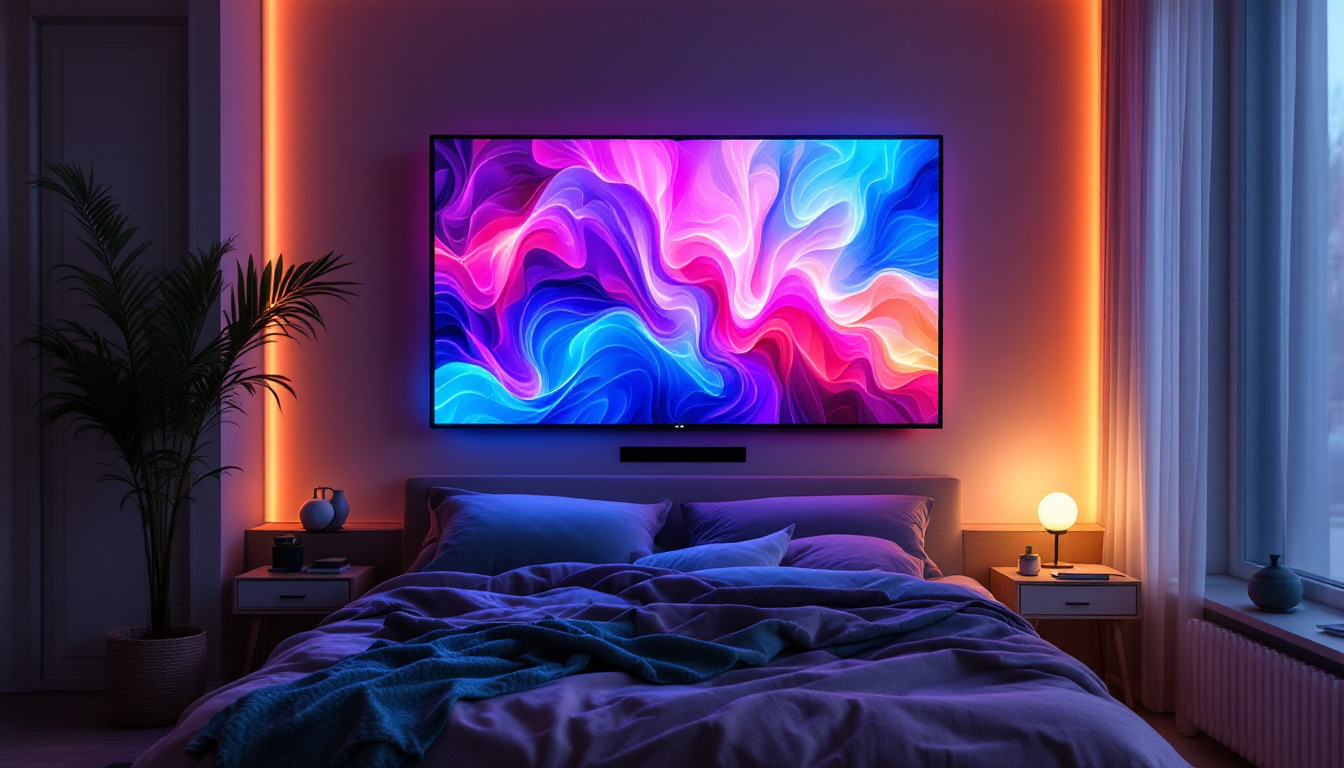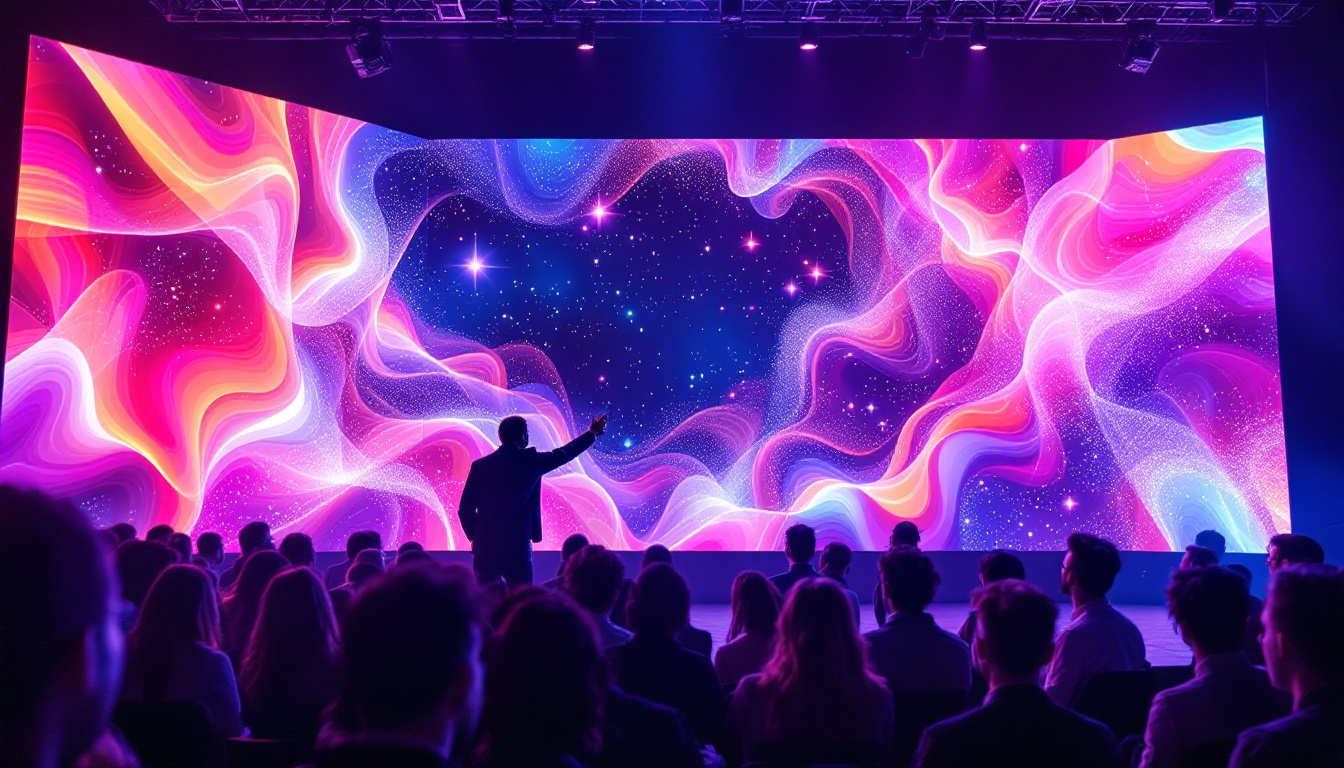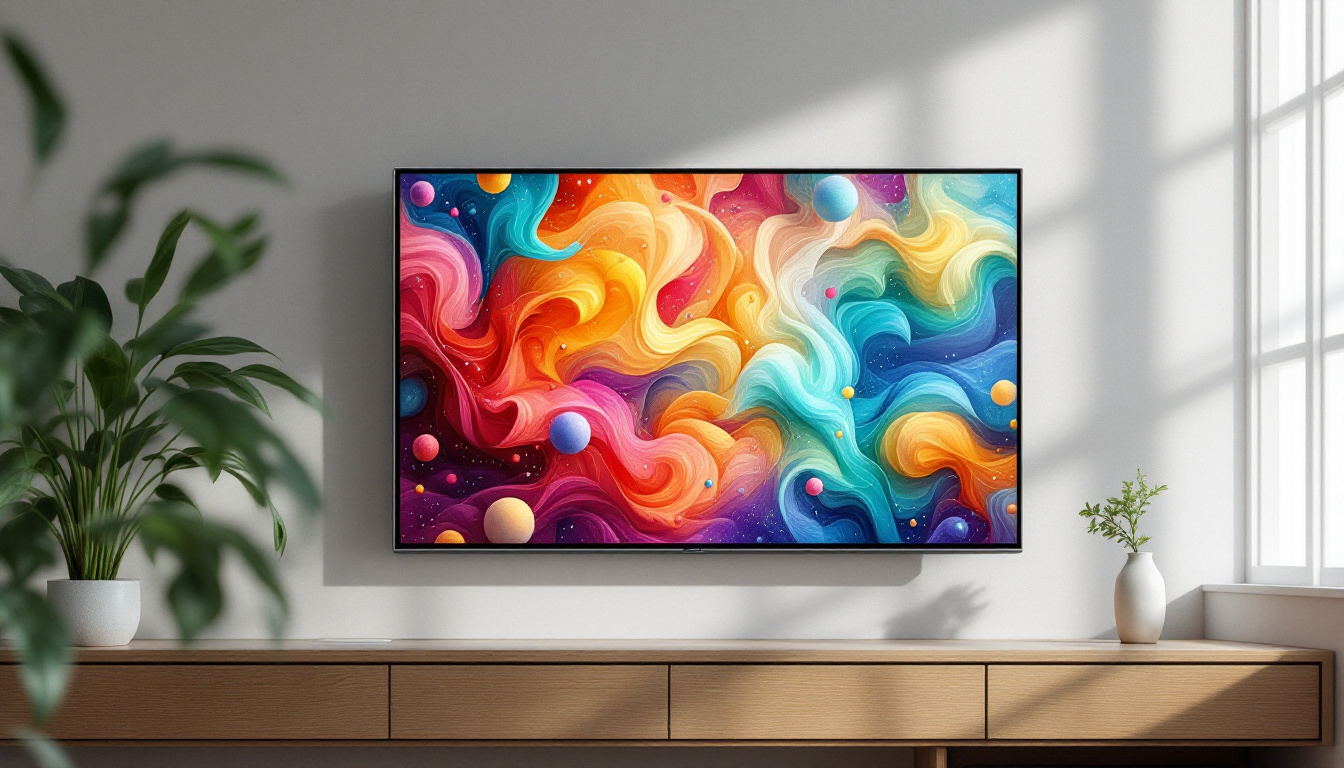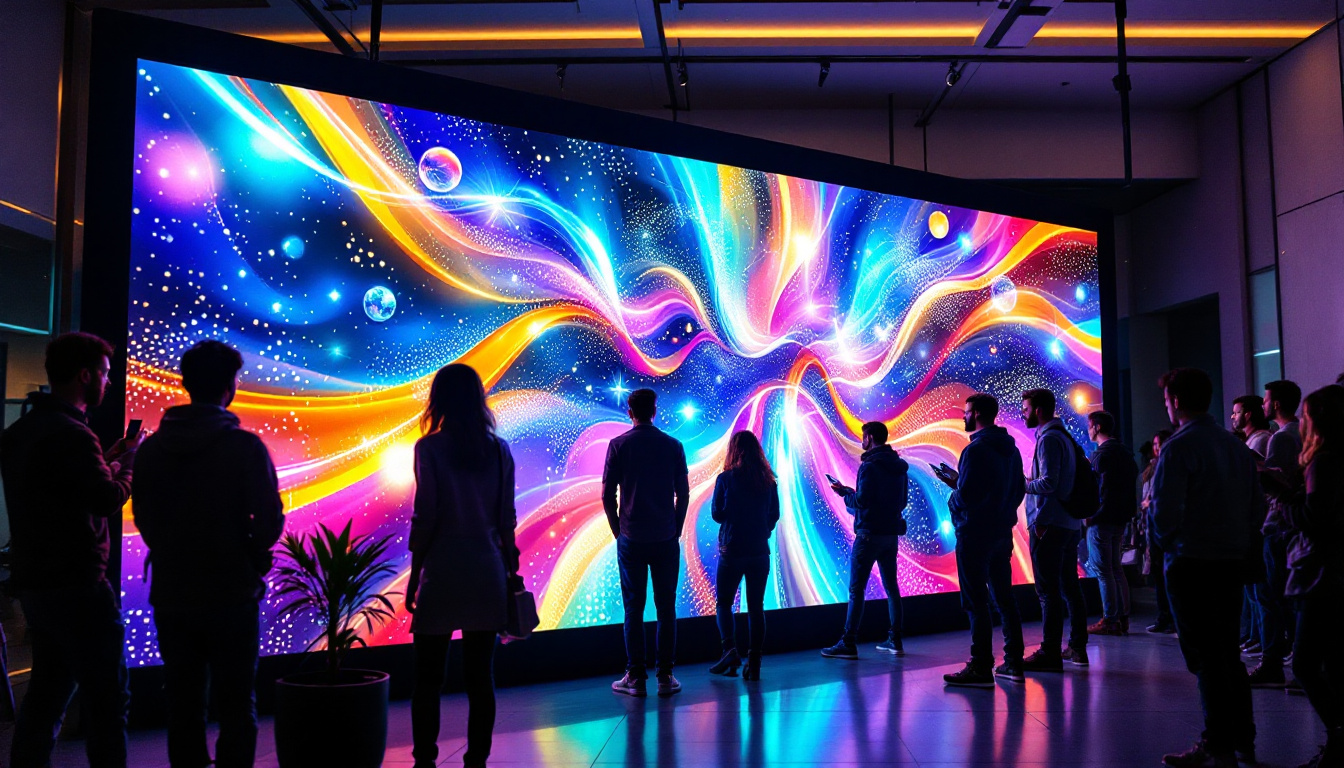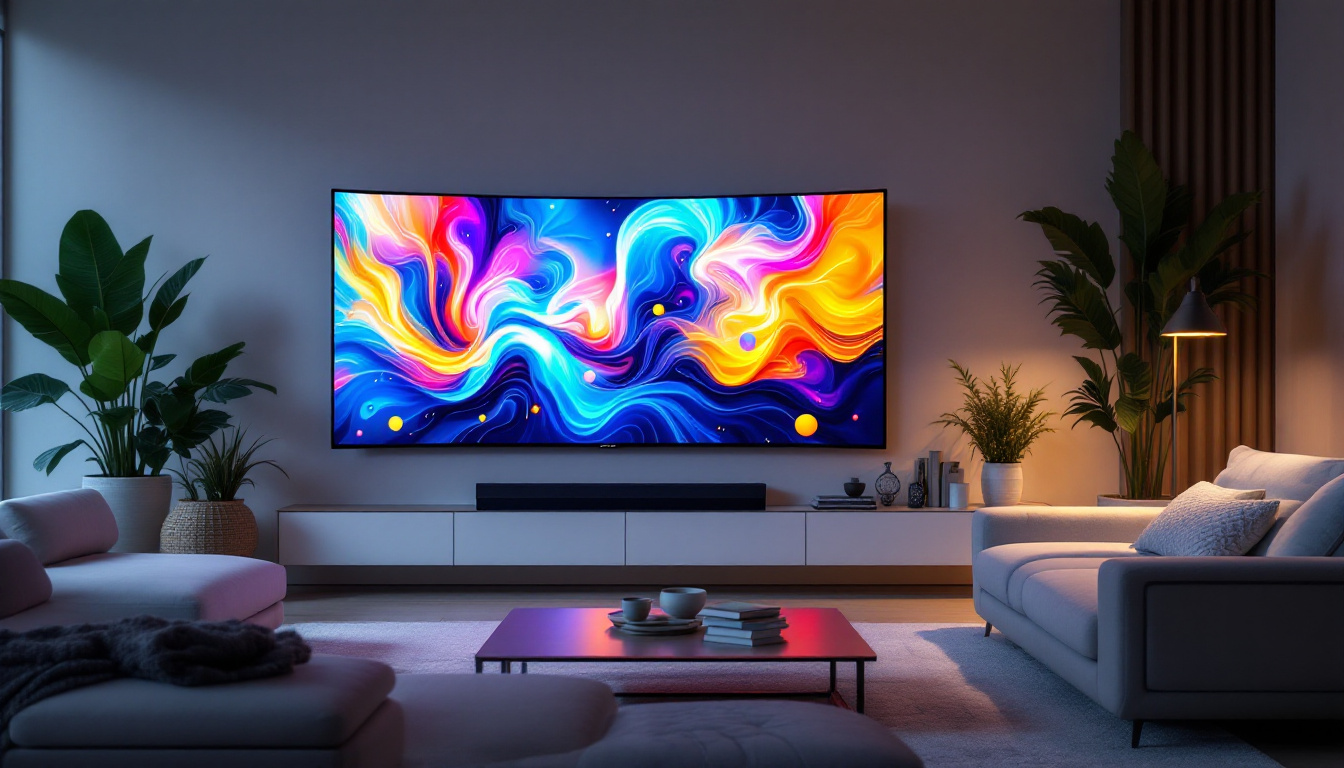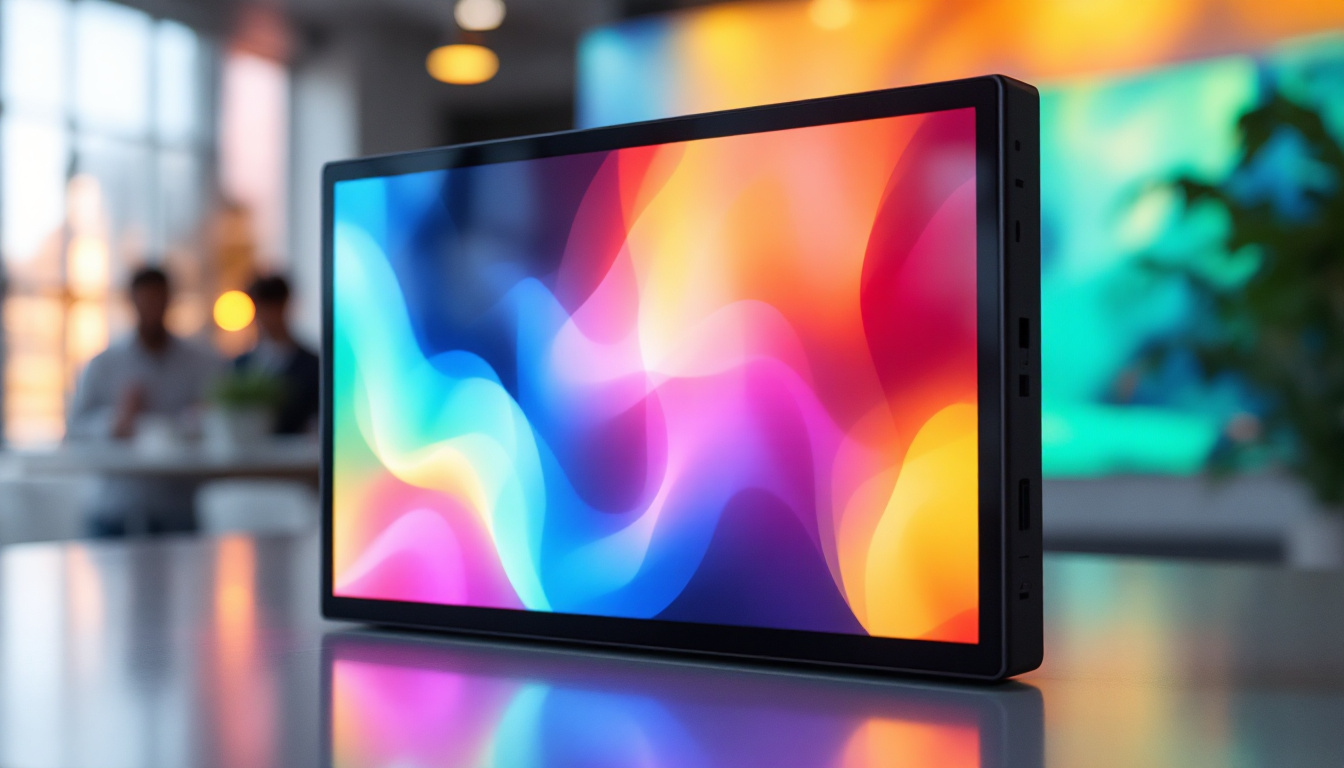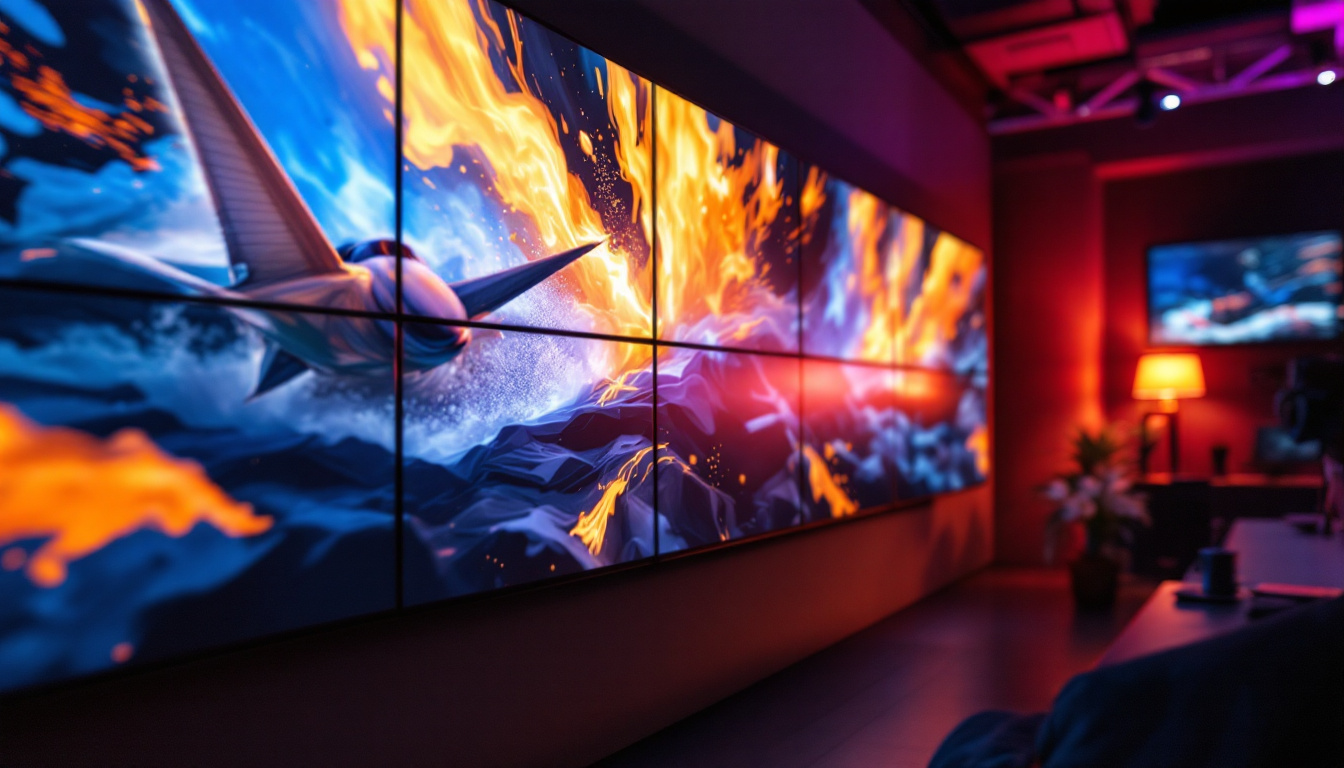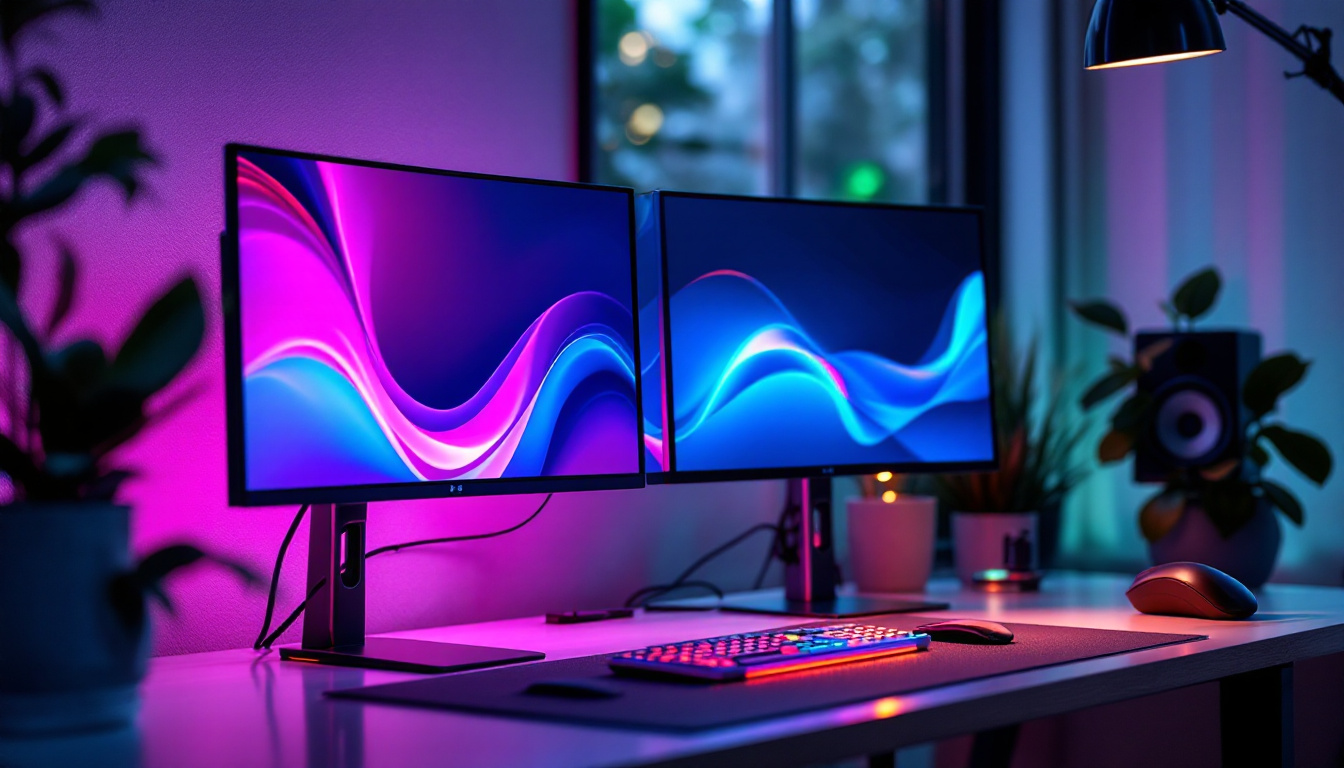Touch Screen TV For Business: LED Display Explained
In the modern business landscape, technology plays a pivotal role in enhancing communication and collaboration. One of the most innovative advancements in this realm is the touch screen TV, particularly those utilizing LED display technology. This article delves into the significance of touch screen TVs for businesses, exploring their features, benefits, and applications.
Understanding Touch Screen Technology
Touch screen technology has revolutionized the way users interact with devices. By allowing direct interaction with the display, it eliminates the need for traditional input devices like keyboards and mice. This technology has found its way into various sectors, including education, retail, and corporate environments. The user-friendly interface of touch screens has made them particularly popular in settings where quick access to information is crucial, such as in hospitals for patient management systems or in retail for point-of-sale systems.
Types of Touch Screen Technology
There are several types of touch screen technologies available, each with its unique advantages. The most common types include resistive, capacitive, and infrared touch screens. Each of these technologies caters to different user needs and environments, making them versatile tools in the tech landscape.
Resistive touch screens respond to pressure, making them ideal for environments where users may wear gloves or where moisture is present. This makes them a popular choice in industrial settings or outdoor kiosks. Capacitive touch screens, on the other hand, rely on the electrical properties of the human body and provide a more responsive experience, which is why they are widely used in smartphones and tablets. Infrared touch screens use light sensors to detect touch, offering high durability and clarity, making them suitable for applications that require a large display, such as interactive whiteboards in classrooms or large-scale information kiosks in public spaces.
How Touch Screen TVs Work
Touch screen TVs combine display technology with touch sensors to create an interactive experience. When a user touches the screen, the sensors detect the location and send this information to the device’s processor. The processor then executes the corresponding action, whether it’s opening an application, navigating a menu, or displaying content. This seamless interaction allows for a more engaging viewing experience, transforming traditional television into an interactive platform for education, gaming, and social media.
Moreover, touch screen TVs often incorporate advanced technologies such as multi-touch capabilities, enabling multiple users to interact with the screen simultaneously. This feature is particularly beneficial in collaborative environments, such as classrooms or conference rooms, where group participation is encouraged. Additionally, many touch screen TVs come equipped with voice recognition and gesture control, further enhancing user interaction and making it more intuitive. As technology continues to evolve, we can expect to see even more innovative applications of touch screen technology in our daily lives, expanding the boundaries of how we consume and engage with content.
The Advantages of LED Displays
LED (Light Emitting Diode) displays are a popular choice for touch screen TVs due to their numerous advantages. These displays offer superior brightness, energy efficiency, and longevity compared to traditional LCD screens.
Brightness and Clarity
One of the standout features of LED displays is their exceptional brightness. This is particularly beneficial in business settings where ambient light can often hinder visibility. LED displays maintain clarity even in well-lit environments, ensuring that presentations and information are easily seen by all viewers. Additionally, the high contrast ratio of LED technology enhances color vibrancy, making images and videos appear more lifelike. This feature is especially advantageous for creative professionals who rely on accurate color representation for graphic design, photography, and video editing.
Energy Efficiency
In an era where energy consumption is a major concern, LED displays shine with their energy-efficient design. They consume significantly less power than traditional displays, which can lead to substantial savings on electricity bills over time. This efficiency not only benefits the bottom line but also aligns with corporate sustainability goals. Furthermore, many LED displays are equipped with smart technology that allows for automatic brightness adjustment based on surrounding light conditions, further optimizing energy use. This capability not only reduces energy waste but also extends the lifespan of the display, making it an even more appealing choice for environmentally conscious businesses.
Longevity and Durability
LED displays are known for their durability. They have a longer lifespan compared to other display technologies, reducing the need for frequent replacements. This longevity makes them a cost-effective investment for businesses looking to enhance their technological infrastructure. Moreover, LED displays are less susceptible to screen burn-in, a common issue with older technologies, which means they can maintain their performance and visual quality over time. This resilience is particularly important in high-usage environments such as retail spaces and public information displays, where consistent performance is crucial for effective communication and customer engagement.
Applications of Touch Screen TVs in Business
Touch screen TVs have a wide array of applications in various business environments. Their versatility makes them suitable for different functions, from presentations to interactive displays.
Interactive Presentations
In corporate settings, touch screen TVs can transform the way presentations are delivered. With the ability to interact directly with the content, presenters can engage their audience more effectively. This interaction fosters collaboration and allows for real-time feedback, making meetings more productive. Moreover, the integration of multimedia elements such as videos, animations, and live data can enrich the presentation experience, keeping the audience captivated and informed. The ability to annotate directly on the screen also empowers presenters to highlight key points and clarify complex ideas on the fly, making the entire session more dynamic and responsive to audience needs.
Digital Signage
Touch screen TVs are increasingly being used as digital signage solutions. Businesses can display advertisements, promotional content, or important information in a visually appealing manner. The interactive nature of touch screens allows customers to engage with the content, enhancing their experience and driving sales. For instance, retail environments can utilize touch screen TVs to showcase product catalogs, enabling customers to browse through items and even check availability in real-time. Additionally, these screens can be programmed to display localized content, ensuring that promotions are relevant to the specific audience in a given location, thus maximizing the impact of marketing efforts.
Training and Education
In training sessions, touch screen TVs can be utilized to create immersive learning experiences. Trainees can interact with simulations, access resources, and participate in group activities, all facilitated by the touch screen interface. This hands-on approach can lead to better retention of information and improved skill development. Furthermore, the ability to record sessions and provide instant feedback through interactive quizzes or polls can significantly enhance the learning process. By incorporating gamification elements, businesses can motivate employees to engage more deeply with the material, turning routine training into an exciting and competitive experience that encourages participation and knowledge retention.
Customer Engagement
Touch screen TVs also play a pivotal role in enhancing customer engagement in various industries. In hospitality, for example, touch screens can be used in lobbies or waiting areas to provide guests with information about local attractions, dining options, and services offered by the hotel. This not only improves the customer experience but also empowers guests to make informed decisions at their own pace. In healthcare settings, touch screens can facilitate patient education by allowing individuals to access information about their conditions and treatment options interactively, thus fostering a more informed and proactive approach to health management.
Collaboration Tools
Moreover, touch screen TVs are becoming essential collaboration tools in modern workplaces. With features that support multiple users, teams can brainstorm ideas, share documents, and work together on projects in real-time, regardless of their physical location. The integration of cloud-based applications allows for seamless sharing of files and ideas, while video conferencing capabilities enable remote team members to participate actively in discussions. This level of collaboration not only enhances productivity but also promotes a culture of innovation, as diverse teams can contribute their unique perspectives and expertise through an interactive platform that encourages open communication.
Choosing the Right Touch Screen TV for Your Business
When selecting a touch screen TV for business use, several factors should be considered to ensure that the investment meets the specific needs of the organization.
Screen Size and Resolution
The size and resolution of the touch screen TV are critical factors. A larger screen can accommodate more viewers, making it ideal for presentations or collaborative work. Additionally, higher resolution ensures that content is displayed clearly, which is essential for detailed graphics or text-heavy presentations.
Connectivity Options
Connectivity is another important aspect. A good touch screen TV should offer multiple connectivity options, including HDMI, USB, and wireless capabilities. This flexibility allows for easy integration with various devices, such as laptops, tablets, and smartphones, facilitating seamless presentations and content sharing.
Software Compatibility
Before making a purchase, it is crucial to consider the software compatibility of the touch screen TV. Ensure that it supports the applications and tools commonly used within the organization. This compatibility will enhance the functionality of the device and streamline workflows.
Installation and Maintenance Considerations
Proper installation and maintenance are vital for maximizing the performance and lifespan of touch screen TVs. Understanding these aspects can help businesses avoid common pitfalls.
Installation Best Practices
When installing a touch screen TV, it is essential to consider the location and mounting options. The screen should be positioned at an appropriate height for viewing, and the mounting hardware should be sturdy enough to support the weight of the display. Additionally, ensuring that there is adequate power supply and connectivity options available is crucial for smooth operation.
Regular Maintenance
Regular maintenance is necessary to keep the touch screen TV functioning optimally. This includes cleaning the screen with appropriate materials to avoid damage and ensuring that all software is updated to the latest versions. Regular checks on connectivity and hardware performance can also prevent potential issues from arising.
Future Trends in Touch Screen Technology
The landscape of touch screen technology is continually evolving, with new advancements on the horizon. Staying informed about these trends can help businesses remain competitive and leverage the latest innovations.
Integration with AI and Machine Learning
One of the most exciting developments in touch screen technology is the integration of artificial intelligence (AI) and machine learning. These technologies can enhance user experience by providing personalized content and automating tasks. For instance, touch screen TVs could learn user preferences over time, making interactions more intuitive and efficient.
Enhanced Collaboration Tools
As remote work becomes more prevalent, the demand for enhanced collaboration tools is on the rise. Future touch screen TVs may incorporate advanced features such as virtual whiteboards, real-time collaboration software, and video conferencing capabilities. This evolution will facilitate seamless communication among team members, regardless of their physical location.
Conclusion
Touch screen TVs equipped with LED display technology offer numerous advantages for businesses looking to enhance communication, collaboration, and overall efficiency. By understanding the technology, its applications, and how to choose the right model, organizations can leverage these devices to their fullest potential. As technology continues to evolve, staying ahead of trends will ensure that businesses remain competitive in an ever-changing landscape.
Investing in touch screen TVs is not just about keeping up with technology; it’s about creating an engaging environment that fosters innovation and productivity. As more businesses recognize the value of interactive displays, the future of touch screen technology looks promising, paving the way for enhanced business operations and customer engagement.
Discover LumenMatrix’s Innovative LED Display Solutions
Ready to take your business’s visual communication to the next level? Explore LumenMatrix’s comprehensive range of LED display solutions, designed to captivate your audience and amplify your message. From Indoor and Outdoor LED Wall Displays to specialized options like Vehicle, Sports, and Floor LED Displays, LumenMatrix has the cutting-edge technology to transform your space. Whether you’re looking to create custom LED displays or seeking an All-in-One solution, our products are tailored to meet your unique needs. Elevate your brand’s visibility and create immersive visual experiences with LumenMatrix. Check out LumenMatrix LED Display Solutions today and see the difference innovation can make.



